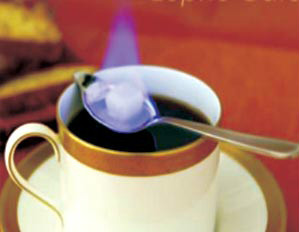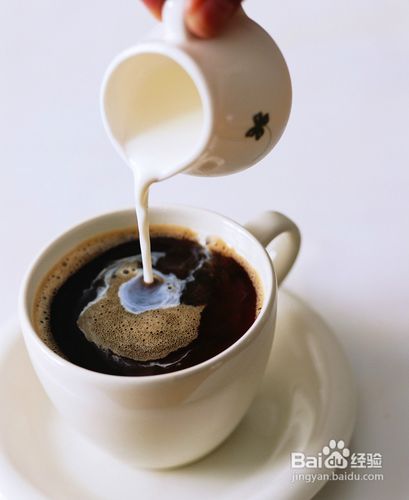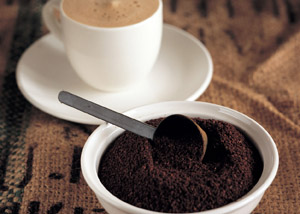How many coffee producing countries are there in the world?
1. Arabica species (scientific name Coffea arabica)
The origin of the Arabica species is the Abyssinia Plateau of Ethiopia (now the Ethiopian Plateau). In the early days, it was mainly eaten as medicine (Islamic couples used it as a secret medicine for physical and mental healing or to awaken the brain). It developed the habit of baking and drinking in the 13th century and was introduced to Europe through the Arab region in the 16th century. it has become a favorite drink all over the world.
Arabica coffee accounts for 75% of all coffee. Its excellent flavor and aroma make it the only coffee that can be drunk directly among these native species. But its resistance to dryness, frost, diseases and insect pests is low, especially the natural enemy of coffee-leaf rust, so the producing countries are committed to variety improvement. Sri Lanka is an example. Sri Lanka used to be a well-known coffee producer, but coffee farms were not spared by leaf rust at the end of the 19th century. Since then, Sri Lanka has turned to develop the black tea industry and rank in the same black tea kingdom as India.
Arabica coffee beans are mainly grown in South America (except parts of Argentina and Brazil), Central America and Africa (Kenya, Ethiopia and other places, mainly East African countries), Asia (including parts of Yemen, India and Papua New Guinea).
two。 Robsta species (scientific name Coffea robusta Linden)
Varieties resistant to leaf rust found in Congo, Africa, teach Arabica species to be more resistant to the disease. People like to compare the robusta species to the Arabica species of coffee. In fact, the robusta species was originally a mutant of the Congolese species (scientific name Cofffea canephora), so it is the Congolese species that should be compared with the Arabica species. To this day, however, the name of the Robusta species is commonly used by the public, and it is regarded as the same species as the Congolese species.
Arabica coffee beans grow at colder tropical high elevations, and the hot and humid zone that is not suitable for Arabica coffee is where robusta coffee grows. Robusta has a unique aroma (called "Rob smell", which some people think is moldy) and bitterness, accounting for only 2% of mixed coffee. 3%, the whole cup of coffee becomes Robusta flavor. Its flavor is so bright and strong that if you want to taste it directly, you have to consider it. It is generally used in instant coffee (which extracts about twice as much liquid coffee as Arabica), bottled coffee, liquid coffee and other industrial coffee. The content of caffeine is about 3.2%, much higher than 1.5% of Arabica species.
The main producers of Robusta species are Indonesia, Vietnam and West African countries centered around C ô te d'Ivoire, Algeria and Angola. In recent years, Vietnam has made more efforts to become one of the major coffee producing countries. Coffee production is also included in national policy (Vietnam also produces some Arabica coffee).
3. Liberian species (scientific name Coffea liberica)
West Africa, the origin of coffee grown in Liberia, has a strong adaptability to all kinds of environments, such as high or low temperature, humidity or dryness, except that it is not resistant to leaf rust and its flavor is worse than that of Arabica, so it is only traded or planted in some West African countries (Libya, C ô te d'Ivoire, etc.).
About 65% of the coffee in circulation in the world market is Arabica.
According to the statistics of the International Coffee Organization (ICO), excluding the domestic transactions of each coffee-producing country, about 65% of the coffee in circulation in the world market is Arabica and 35% is robusta. Arabica species are characterized by slender and flat grains, while robusta coffee beans are more round and can be easily distinguished by their shape.
But if you add in the hybrids of Arabica and Robusta-such as the variant Variedad Colombia, which is the main variety of Colombian coffee, has 1/4 Robusta pedigree, and therefore resistant to leaf rust and high yield-and its mutant subspecies of coffee beans, the classification is more complicated. Some Arabica coffee beans are quite close to the native species, while others are quite similar to the Robusta species. Even if the coffee has the same name (named from the place of origin), as long as the cultivated varieties are different, the flavor will be different.
Cultivation conditions of Coffee
There is a noun called "Coffee Belt". There are more than 60 coffee producing countries in the world, most of which are located in the tropics and subtropics between the Tropic of Cancer (23 °26 'north and south). This coffee growing area is called a "coffee belt" or "coffee area" (Coffee Zone).
The annual average temperature of the coffee belt is above 20 ℃, because the coffee tree is a tropical plant and cannot grow normally if the temperature is below 20 ℃.
1. Climatic conditions
Arabica coffee is not resistant to high temperature and humid climate, nor can it stay at a low temperature below 5 ℃ for a long time, so it is planted on steep slopes of 1000 to 2000 meters above sea level. On the other hand, Robusta caffeine is adaptable (Robusta originally means "tenacious and strong") and is mostly grown in lowlands below 1000 meters above sea level.
The average annual rainfall of 1000 mm to 2000 mm, coupled with moderate sunshine, is the most suitable environment for coffee growth. However, Arabica coffee is not resistant to strong sunlight and extreme heat, so it is suitable for growing in terrain prone to morning fog, especially where there is a large temperature difference between day and night. In addition, in order to avoid direct sunlight, some places will plant shelter trees, such as bananas, maize, mango trees and so on.

Important Notice :
前街咖啡 FrontStreet Coffee has moved to new addredd:
FrontStreet Coffee Address: 315,Donghua East Road,GuangZhou
Tel:020 38364473
- Prev

Storage method of coffee beans roasting coffee in the oven, soot
Another important point to observe when peeling off the coffee beans is to see if the firepower is uniform when baking. If it is uniform, the outer skin and inner layer of the beans should be the same color. If the color of the surface layer is obviously much darker than that of the inner layer, it means that there may be too much firepower during baking, which will also affect the aroma and flavor of coffee beans. Pay attention to the purchase of coffee beans
- Next

The cultivation process and sowing of Coffee in Yunnan & does #160; Coffee belong to Arabica?
People often mistakenly think that coffee is grown directly with raw beans, but it takes a long time to grow coffee only to find that it doesn't sprout. In fact, coffee is grown with seeds with endocarp (Parchment). The inner fruit (or sheepskin or paper parchment) refers to the tea-brown hard skin that wraps the coffee seeds, and the coffee beans attached to that layer are called Parchment Bean. Put aside the full maturity
Related
- Does Rose Summer choose Blue, Green or Red? Detailed explanation of Rose Summer Coffee plots and Classification in Panamanian Jade Manor
- What is the difference between the origin, producing area, processing plant, cooperative and manor of coffee beans?
- How fine does the espresso powder fit? how to grind the espresso?
- Sca coffee roasting degree color card coffee roasting degree 8 roasting color values what do you mean?
- The practice of lattes: how to make lattes at home
- Introduction to Indonesian Fine Coffee beans-- Java Coffee producing area of Indonesian Arabica Coffee
- How much will the flavor of light and medium roasted rose summer be expressed? What baking level is rose summer suitable for?
- Introduction to the characteristics of washing, sun-drying or wet-planing coffee commonly used in Mantenin, Indonesia
- Price characteristics of Arabica Coffee Bean Starbucks introduction to Manning Coffee Bean Taste producing area Variety Manor
- What is the authentic Yega flavor? What are the flavor characteristics of the really excellent Yejasuffi coffee beans?

